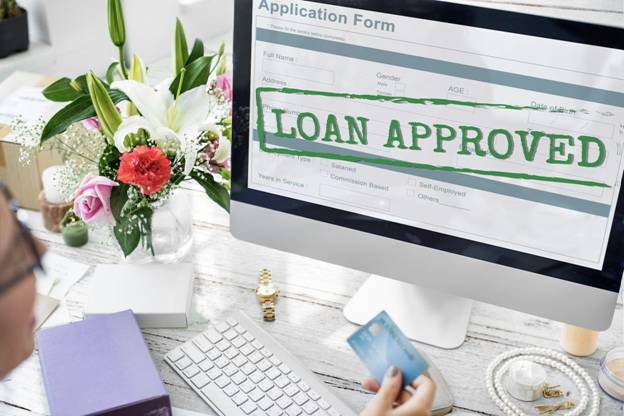Loans without collateral are versatile solutions for various financial needs in the vast landscape of financial tools available to consumers. Whether it’s funding a home renovation, consolidating high-interest debts, or covering unexpected expenses, understanding how to qualify for an unsecured loan is crucial. This comprehensive guide will walk you through the key factors influencing loan approval and provide actionable tips to enhance your eligibility, empowering you to make informed financial decisions.
Unsecured loans represent a category of credit not backed by collateral, unlike secured loans that rely on assets such as homes or vehicles. This lack of collateral makes the qualification process distinctive and significantly emphasizes the borrower’s creditworthiness. Here’s a closer look at the essential aspects of unsecured loans:
Definition and Key Features
Unsecured loans are financial products granted solely based on the borrower’s creditworthiness and ability to repay. Unlike secured loans, there’s no requirement for collateral, making the application process more accessible for many. Common types of unsecured loans include personal loans, credit cards, and lines of credit.
Types of Unsecured Loans
- Personal Loans – Offered by banks and online lenders, personal loans are versatile and can be used for various purposes, such as debt consolidation, home improvement, or medical expenses.
- Credit Cards – While revolving credit, credit cards are a form of unsecured lending. Users can make purchases up to their credit limit and repay the balance over time.
- Lines of Credit – Similar to credit cards, lines of credit provide a predetermined credit limit, but they often come with lower interest rates and more flexible repayment terms.

Factors Influencing Unsecured Loan Approval
Qualifying for an unsecured loan involves meticulously evaluating various factors by lenders. Understanding these key elements is crucial for positioning yourself favorably during the application process.
Credit Score and History
- Importance of a Good Credit Score – Your credit score is a numerical representation of your creditworthiness. Lenders use this three-digit number to assess the risk of lending you money. A higher credit score increases your chances of approval and may qualify you for lower interest rates.
- How Credit History Impacts Loan Eligibility – Lenders scrutinize your credit history to gauge your financial behavior. Timely payments, a low credit utilization ratio, and a history of responsible credit use contribute positively to your creditworthiness.

Income and Employment
- Minimum Income Requirements – Lenders typically set minimum income thresholds to ensure borrowers have the means to repay their loans. Meeting or exceeding these requirements enhances your eligibility.
- Stability of Employment – A steady job history demonstrates reliability to lenders. Employment stability and a reliable income source strengthen your case for loan approval.
Debt-to-Income Ratio
- Explanation of Debt-to-Income Ratio – The debt-to-income ratio is a crucial metric that compares monthly debt payments to gross monthly income. Lenders use this ratio to assess your ability to take on additional debt responsibly.
- Ideal Ratio for Loan Approval – While the ideal ratio can vary, a lower debt-to-income ratio is generally favorable. It indicates you have sufficient income to cover your debts and accommodate a new loan.
Loan Amount and Purpose
- Lender Considerations for Loan Purpose – Some lenders may inquire about the purpose of the loan. While unsecured loans offer flexibility, specifying a clear and responsible use of the funds may positively impact the lender’s decision.
- Maximum Loan Amounts Based on Purpose – Lenders may impose maximum loan limits based on the intended use. Understanding these limits ensures you request an amount aligned with your needs and the lender’s guidelines.
Also read: Learn About Different Types of Loans Before Approaching a Lender
Tips for Qualifying for an Unsecured Loan
Now that we’ve explored the key factors that influence unsecured loan approval let’s delve into actionable tips to enhance your eligibility and increase the likelihood of a successful application.
Check and Improve Your Credit Score
- Obtaining a Credit Report – Begin by obtaining a copy of your credit report from major credit bureaus. Review the report for inaccuracies and address any discrepancies promptly.
- Strategies for Improving Credit:
- Pay bills on time to build a positive payment history.
- Reduce outstanding balances on credit cards to lower your credit utilization ratio.
- Avoid opening new credit accounts shortly before applying for an unsecured loan.

Verify and Strengthen Your Income
- Documenting Income Sources – Ensure you can provide clear income documentation, including pay stubs, tax returns, or other relevant documents.
- Demonstrating Stable Employment – Avoid making significant job changes leading up to the loan application. Lenders often prefer borrowers with a stable employment history.
Manage Existing Debt
- Reducing Outstanding Debts – Prioritize paying down existing debts to improve your debt-to-income ratio. This enhances your eligibility and positions you as a responsible borrower.
- Consolidation Options – Explore debt consolidation options if you have multiple outstanding loans. Consolidating debts can simplify your financial situation and make it more manageable.
Choose the Right Lender
- Researching Reputable Lenders – Look for lenders with a history of fair lending practices. Read customer reviews to gauge the experiences of others.
- Understanding Lender Requirements and Preferences – Different lenders may have varying criteria for approval. Tailor your application to align with the specific requirements of the lender you choose.
Alternatives for Individuals with Lower Credit Scores
For individuals grappling with lower credit scores, securing an unsecured loan might seem challenging. However, several alternative options and strategic approaches can still open doors to financial assistance.
Exploring Alternative Lending Options
In online financing, platforms like billigeforbrukslån.no/ in Norway provide a list of online lenders, and peer-to-peer lending services have emerged as viable alternatives. These entities often specialize in accommodating individuals with diverse credit profiles. Unlike traditional banks, they may consider a broader range of factors beyond a simple credit score assessment, providing a more holistic view of your financial situation.
Credit unions, known for their community-oriented approach, also present an alternative avenue. These institutions frequently adopt more flexible lending criteria compared to mainstream banks. Some credit unions extend unsecured loans to their members, often with competitive interest rates.
Strategies for Rebuilding Credit for Future Loan Eligibility
For those actively working to rebuild their credit, specific strategies can pave the way for improved financial standing. Secured credit cards, for instance, require a security deposit but can be instrumental in demonstrating responsible credit behavior. Timely payments and prudent card usage can positively affect your credit history.
Credit builder loans are another tool tailored for individuals looking to establish or rebuild credit. These loans typically involve a security deposit, and your repayments contribute to building a positive credit history.
Considering a co-signer or a joint application is yet another avenue. By involving a co-signer with a more favorable credit score, you enhance your chances of loan approval. Joint applications combine the credit strengths of multiple applicants, presenting a collaborative approach to lending.
Also read: Things You Should Know Before Applying for Insta Personal Loan
Responsible Borrowing Practices
While obtaining an unsecured loan is significant, adopting responsible borrowing practices is crucial to maintaining financial well-being.
Borrowing Only What Is Necessary
Deliberation is critical when assessing your financial needs. Borrowing only the amount essential to meet your specific requirements prevents unnecessary debt accumulation. Please resist the temptation to borrow more than necessary, which can lead to financial strain in the long run.
Budgeting for Loan Repayments
Creating a meticulous repayment plan is an integral part of responsible borrowing. Consider all relevant factors, including interest rates, loan terms, and financial obligations. Adequate budgeting ensures you can comfortably meet your repayment obligations without compromising other essential aspects of your economic well-being.
Establishing and maintaining an emergency fund is another critical component of responsible financial management. Allocating a portion of your budget to an emergency fund provides a financial safety net. This safety net can prove invaluable in covering unexpected expenses, reducing the reliance on additional credit, and fostering a more secure financial foundation.
Also read: Bridging Loan For Small-Size Companies
Understanding Loan Terms and Conditions
Thoroughly reviewing and comprehending the terms and conditions of your loan agreement is non-negotiable. Pay close attention to details such as interest rates, repayment schedules, and any applicable fees. This meticulous approach ensures that you enter into a loan agreement fully informed, minimizing the risk of surprises down the road.
Maintaining open lines of communication with your lender is a proactive step in responsible borrowing. In times of financial challenges, reaching out to your lender and discussing your situation can lead to potential solutions. Some lenders may offer assistance or flexibility during periods of hardship, emphasizing the importance of transparent and proactive communication in managing your financial commitments.
Exploring alternative lending options and incorporating responsible borrowing practices expands opportunities for individuals with lower credit scores and contributes to a positive and sustainable borrowing experience. These strategies empower borrowers to navigate the unsecured loan landscape with confidence and financial prudence.
In the intricate realm of unsecured loans, mastering the art of qualification involves a nuanced understanding of critical factors, strategic planning, and a commitment to responsible financial practices. As we conclude this comprehensive guide, let’s recap the essential insights and encourage a proactive approach toward achieving your financial goals.
Embarking on the journey towards securing an unsecured loan is not merely a financial transaction. It’s an opportunity to take control of your economic narrative.

Emphasis on Responsible Borrowing
Above all, responsible borrowing practices stand as the cornerstone of a positive and sustainable financial journey. These practices foster a healthy financial foundation, whether it’s borrowing only what is necessary, crafting meticulous repayment plans, maintaining an emergency fund, or understanding loan terms and conditions.
Qualifying for an unsecured loan is a multifaceted process that requires diligence, strategic thinking, and a commitment to responsible financial behavior. As you embark on your journey, leverage the insights shared in this guide to navigate the unsecured loan landscape with confidence and wisdom. May your financial endeavors be marked by success and prudent decision-making.
Read Next Blog:
Can Anyone Get a Debt Consolidation Loan?
